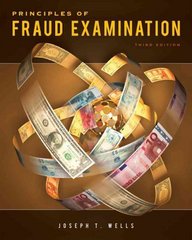Question
As a brand on the cutting edge, LVMH was always looking to create or incorporate the next big thing into their product line. In 2022,





As a brand on the cutting edge, LVMH was always looking to create or incorporate the next big thing into their product line. In 2022, with sustainable materials becoming a focal point of consumer demand, LVMH launched an initiative to partner with Fendi, Imperial College London, and Central Saint Martins, UAL, to develop a prototype for new regenerative bio-textiles. The research initiative aims to create textiles capable of recreating types of animal wear, including fur, in an effort to better protect the planet. "The LVMH Life 360 environmental strategy integrates a research and innovation program dedicated to sustainable luxury: inventing new materials, new regenerative practices, and new technologies will enable our Maisons to achieve their climate and biodiversity ambitions," said Helene Valade, Environmental Development Director of LVMH.1
The initiative came on the heels of a big merger for LVMH. Late in 2020, LVMH finally closed a deal to acquire Tiffany & Company, the American jeweler famed for its duck egg blue boxes and diamond engagement rings.2 The decision to acquire Tiffany had first been announced in November 2019, but the French luxury giant grew increasingly nervous about the transaction, as the pandemic devasted sales of luxury goods. LVMH threatened to abandon the takeover, but finally agreed to complete the purchase at a price slightly lower than the $16 million originally settled upon.
Bernard Arnault, CEO of LVMH, has long been considered the most aggressive and acquisitive deal maker in the luxury business. By 2018, he had swept through much of Europe snapping up brands in the soft luxury sector such as Givenchy, Kenzo, Christian Dior, and Loro Piana. At the same time, he was building up his extensive portfolio of fine wines and spirits such as Don Perignon, Moet Chandon, and Veuve Cliquot.
Through the addition of Tiffany to its portfolio, LVMH would gain a bigger foothold in the United States, according to LVMH executives, as well as expose Tiffany to more consumers in Europe and Asia. Tiffany had experienced some difficulties in recent years, as it struggled to turn around falling sales. But under the stewardship of its current chief executive, Alessandro Bogliolo, and artistic director Reed Krakoff, it had turned its fortunes around, fueled by revamped product offerings and savvy marketing campaigns targeting younger consumers. The company had also invested in a face-lift for its landmark Fifth Avenue flagship store in New York.
The acquisition of Tiffany, which Arnault had coveted for years, would consolidate LVMH's position as a major player in the hard luxury sector, an industry label given to watches and jewelry. It would double the size and profitability of its portfolio in this category, which includes brands like Bulgari, Chaumet, Hublot, and Tag Heuer and accounts for roughly 8.25 percent of LVMH sales. Arnault declared that under LVMH, Tiffany would thrive for centuries to come.
Assembling a Luxury Portfolio LVMH was created in 1987 in Paris, France, through the merger of Louis Vuitton, the upscale luggage company and Moet Hennessy, a leading producer of champagne and cognac. The merger created what the French press called a dashing kind of corporate animal: the first real world-scale multinational in top-of-the-line luxury goods. Determinedly French in both product offerings and management style, LVMH with one bold move redefined a bunch of small and fragmented industries into a coherent and growing sector.
Over the next fifteen years, LVMH expanded into new areas and continued to add luxury brands. It moved into fashion with Givenchy, perfumes with Guerlain, jewelry with Fred, shoes with Berluti, and watches with Tag Heuer. It eventually moved into selective retailing with the acquisition of Sephora. By 2020, LVMH had amassed 75 prestige brands that were managed independently under the umbrella of five different houses (see Exhibit 1).





Step by Step Solution
There are 3 Steps involved in it
Step: 1

Get Instant Access to Expert-Tailored Solutions
See step-by-step solutions with expert insights and AI powered tools for academic success
Step: 2

Step: 3

Ace Your Homework with AI
Get the answers you need in no time with our AI-driven, step-by-step assistance
Get Started


